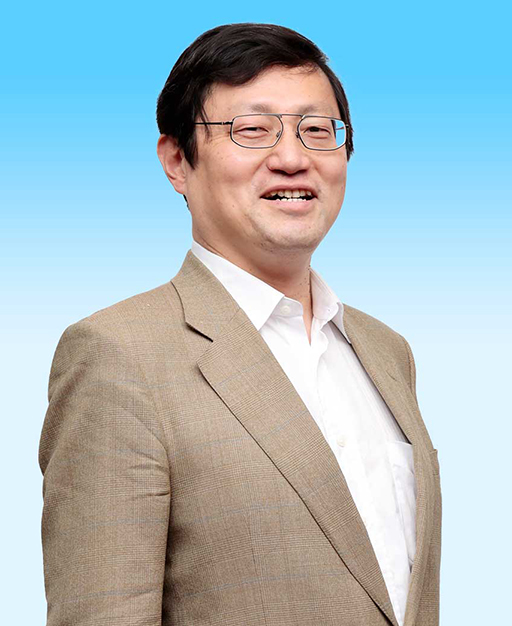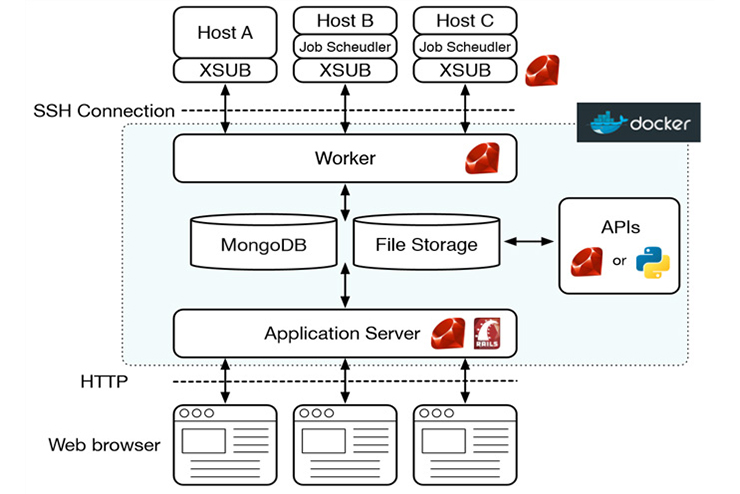TOP
 Research
Research
 Research Teams for Science of Computing and Science by Computing
Research Teams for Science of Computing and Science by Computing
 Discrete Event Simulation Research Team
Discrete Event Simulation Research Team
Discrete Event Simulation Research Team
Japanese
Team Principal Nobuyasu Ito
 nobuyasu.ito@riken.jp (Lab location: Kobe)
nobuyasu.ito@riken.jp (Lab location: Kobe)- Please change [at] to @
- 2023
- Unit Leader, Quantum Computing Simulation Unit, Quantum-HPC Hybrid Platform Division, R-CCS (-present)
- 2012
- Team Leader, Discrete Event Simulation Research Team, AICS (renamed R-CCS in 2018), RIKEN (-present)
- 1997
- Associate Professor, Graduate School of Engineering, The University of Tokyo
- 1991
- Researcher, Information Systems Center, Japan Atomic Energy Research Institute
- 1991
- DSc, Graduate School of Science,The University of Tokyo
Keyword
- Statistical physics
- Computational physics
- Complex system
- Nonequilibrium phenomena
- Nonlinear phenomena
Research summary
Explosive growth of computer performance has been bringing us the better grasp of global society.
Now with top computers, a new era of social applications has begun: microscopic simulations of our world and society. Such top computers with 10PFLOPS or more performance, simulations of billions to trillions of complex elements possible, and the number and their complexity will grow with next Exascale and future Zetascale computers.
With such computational power, we can challenge complex behavior of substance with direct simulation using molecular models, and social phenomena using models of each human, each vehicle and each transaction distributed and networked in global space.
This team challenges such microscopic simulations for macroscopic phenomena, which we call the "Neo-Avogadro Challenge", with K and future computers of Exascale and beyond.
Main research results
Development of simulation management applications
Simulation studies often require the execution and analysis of an enormous number of simulations, which current massive-parallel supercomputers are capable of carrying out. However, designing and executing millions of different simulations are usually impractical. It is urgently necessary, therefore, to remove this obstacle in order to realize such studies, and this can be done by accelerating supercomputer applications.
Hence, we have developed OACIS, an open-source application software package, which we publicly released in 2014. Users operate OACIS through a web browser via a network. After installing OACIS on their computers, users upload and then register their own simulation and analysis software with OACIS together with specifies execution parameters. OACIS submits these jobs for execution via the network, monitors their status and gathers results when they are completed. APIs for Ruby and Python programs are available so that these programs can operate OACIS instead of the user.
In employing OACIS on the K and other supercomputers, we have studied various social simulations. Our results include the development of a simulation method to study important factors of vehicular traffic in a city, and we have applied it to the city of Kobe's traffic system. We have also developed a method to study the bottleneck factor that arises when people flee from major disasters. This we have applied to evacuation planning in the event of a tsunami attack on the cities of Kanazawa and Kamakura.

Representative papers
- Hiroshi Watanabe, Masaru Suzuki, Hajime Inaoka, and Nobuyasu Ito:
"Ostwald ripening in multiple-bubble nuclei,"
The Journal of Chemical Physics, Vol. 141, No. 23, 234703 (2014). - Yohsuke Murase, Janos Torok, Hang-Hyun Jo, Kimmo Kaski, and Janos Kertesz,:
"Multilayer weighted social network model"
Physical Review E, 90, (2014) 052810. - Yohsuke Murase, Takeshi Uchitane, and Nobuyasu Ito,:
"A tool for parameter-space exploration"
Physics Procedia 57 pp. 73-76 (2014).
